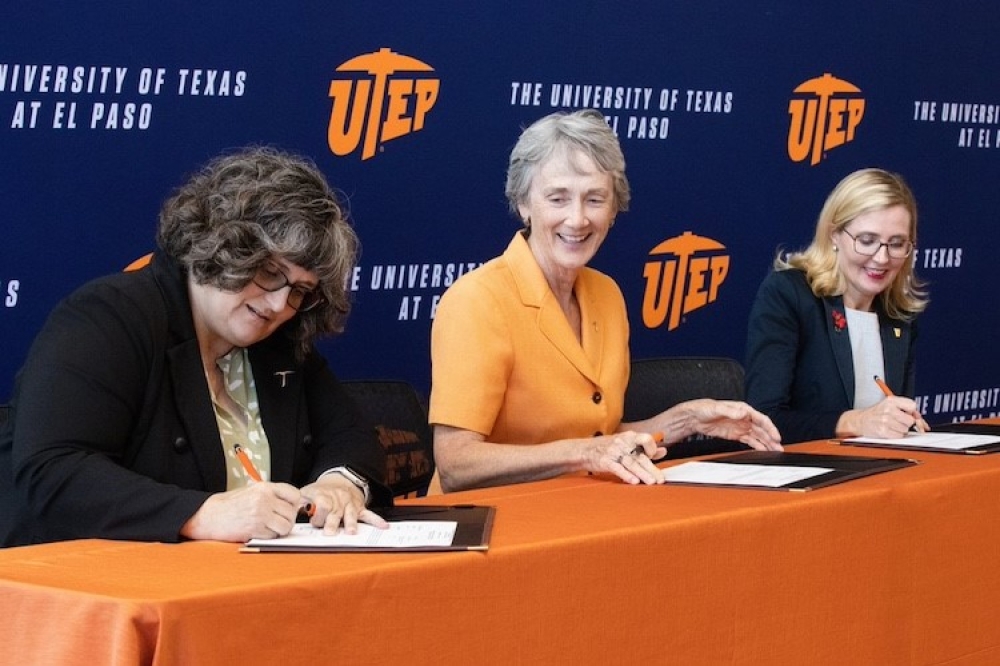UTEP establishes collaboration with DoD and NSA

The University of Texas at El Paso has revealed new collaborations with the Department of Defense (DoD) and the National Security Agency (NSA) that support research and training to strengthen the nation’s leadership in semiconductor, or microchips, technology.
NSA, the signals intelligence and cybersecurity agency for the United States, also recently named UTEP as an NSA Center of Academic Excellence in Cybersecurity Research, making UTEP one of only 11 universities nationwide to hold all three NSA Center of Excellence designations in Cybersecurity Defense, Cybersecurity Operations and Cybersecurity Research.
“We are deepening our relationship with the nation’s premier cybersecurity agency,” said UTEP President Heather Wilson. “In both computer science and electrical and computer engineering, UTEP conducts exceptional research and develops talented students. We will build on this.”
Under the Office of the Under Secretary of Defense for Research and Engineering (OUSD(R&E)) Trusted and Assured Microelectronics (T&AM) program’s Scalable Asymmetric Lifecycle Engagement (SCALE) initiative, UTEP students and faculty are undertaking DoD-relevant microelectronics research in the fields of physics, engineering, materials science and cybersecurity. The University’s SCALE participation seeks to enhance the education and experience of students and equip them upon graduation to meet the needs of the defense industry’s microelectronics workforce.
“The DoD and NSA require a semiconductor-savvy workforce who can pair expertise in microelectronics design and manufacturing with right-sized cybersecurity protections,” said Meredith Dyck, Ph.D., chief strategist for microelectronics at NSA. “By collaborating with UTEP, we aim to create a pipeline of exceptional graduates who are poised to tackle the most challenging national security problems. Today’s event is a significant step in the right direction.”
UTEP semiconductor research will begin with a focus on making 3D printed microchips capable of higher performance at a reduced cost.
“A big trend in the industry is, how do we pack more and more capabilities onto one chip? Can we combine more complicated parts into a single package to make things faster, better, and cheaper?” said Robert C. Roberts, Ph.D., assistant professor in the Department of Electrical and Computer Engineering at UTEP. “This is a pivotal research area in the semiconductor technology industry.”
Salamah Salamah, Ph.D., professor and chair of the UTEP Computer Science Department explained that the new NSA cybersecurity research designation recognizes the quality of the University’s doctoral program in computer science, which has existed since 2005. The cyber defense and cyber operations designations recognize the rigor of undergraduate programs in computer science, which prepare students with the skills needed to protect networks against cyberattacks and to gain a decisive advantage for the nation through cyber operations in support of national security.
“This new designation solidifies UTEP’s standing as a leader in cybersecurity education and research throughout the nation,” he added. “We are preparing graduates who contribute to the workforce in areas of great significance to the nation’s defense and global economic standing and creating new knowledge that can make our cyber infrastructure more secure.”

































